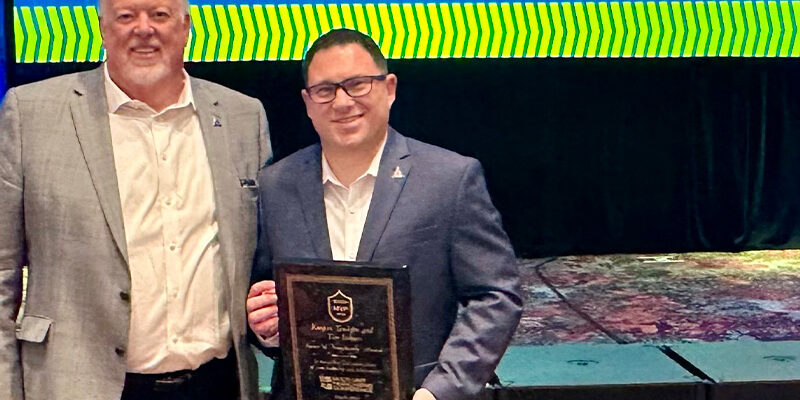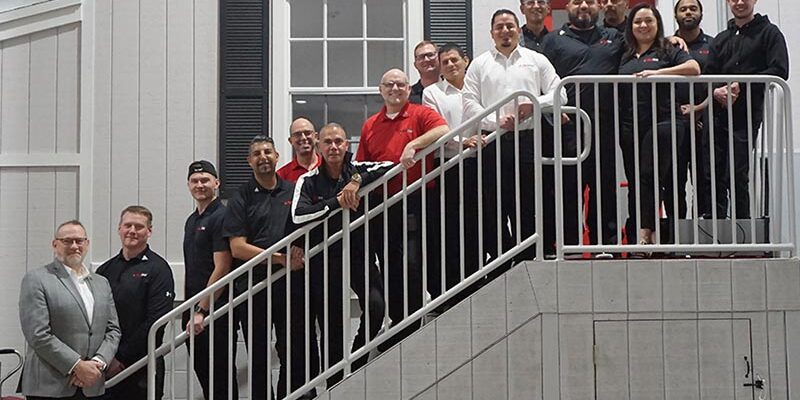Reality Capture: Using 3D Imaging in Restoration

By Brandon Donatelli
It was a stark reminder; while at my first Property and Liability Resource Bureau (PLRB) Tech Symposium earlier this year, the hottest topic in insurance and restoration was not, in fact, simply technology, but rather the omnipresent yet elusive technical issue that’s never far from the thoughts of any insurance professional: documentation.
For the better part of the past 20 years I have worked in the insurance industry, and what I’ve witnessed has been something akin to a game of tennis: a never-ending volley of advances in software and claims management tools, lobbed back and forth between carriers and service providers, all with the intention of capturing the most accurate documentation to manage and settle claims. For the restoration contractor, thorough and proper documentation is necessary to ensure you get paid for your services.
The problem with digital photo documentation
The Property Insurance and Restoration Conference (PIRC) has recommendations for digital photo documentation, created by professionals in the insurance industry representing carriers and service providers at the highest levels. This incredibly knowledgeable and reputable group has defined the “Qualities of a Quality Photo,” which lists seven key factors to successful photo documentation:
- Exterior of the loss location,
- Interior,
- Floor and ceiling,
- Pre-existing conditions,
- Cause of loss,
- Resulting damage,
- Contents.
In covering these bases, the person capturing the photos requires an in-depth understanding of property loss and ideally would be trained or certified as a technician. Without this knowledge, missing key elements can render photos worthless. In an effort to avoid missing these details, the practice of taking large quantities of photos has become an unbearable norm for the industry. After all, if a picture is worth a thousand words, then the more pictures, the more valuable, right? In reality, this couldn’t be farther from the truth.
In the traditional insurance workflow, after photos are taken (which in a well-documented claim can range from several dozen to several hundred), there are an additional five steps to their transfer and documentation. Yes, you read correctly, documenting the documentation! It is as redundant as it sounds. That workflow goes something like this:
- Step 1: Use a phone or camera to take photos.
- Step 2: Transfer the pictures to a computer (which typically happens hours later, after a multitude of thoughts and ideas regarding the loss site have been forgotten).
- Step 3: Name (or title) all the photos.
- Step 4: Use a pre-templated word processing document. Commonly the last person’s photos are still in it, adding the step of first deleting the previous photos.
- Step 5: Place the photos in the template page by page.
- Step 6: Label each photo again and hope the captions align.
Sound like fun? If only I had a dime for every time I heard the words, “it is what it is.” When professionals find themselves taking hundreds of photos to ensure they capture every detail, this workflow becomes unmanageable. I have seen many operations, both by carriers and service providers, and this process is routinely incomplete and disorganized until the dreaded dispute arises. Then everyone is frantically trying to piece photos together to understand the story that never was completed originally. Cycle times suffer, nerves run thin, and the coveted mutual customer loses patience hanging in the imbalance.
Brandon Burton of Next Gear Solutions offers insight in his editorial, “The Digital Myth: Unlock the Truth Behind Embracing Industry Technology.” He explains:
Industry standards are becoming more complex, requiring more mathematical analysis to drive objective decision making.
Insurers, TPAs, and other stakeholders are requiring more robust documentation to fully memorialize the project and its overall successes and shortcomings.
The trend for increasing transparency in documentation and results will not reverse; it will grow as more electronic systems and software become further connected.
How 3D imaging can help

Image courtesy of Matterport.
As recently as just a few short years ago, the insurance ecosystem had been slow to gain traction with technology relative to other industries. But with increases in internet speed, advances in web-based software, and strides in cyber security, adoption of innovative tools are finally starting to take shape. This includes the implementation of 3D reality capture, which creates precise representations of a property and its condition, all in the form of a navigable 3D model.
While reality capture most directly impacts documentation, its efficiencies extend throughout the claims management cycle. For the restoration professional, 3D imaging technology can help to tell the full story. 3D models provide an accurate and complete documentation of a loss, capturing details that previously required hundreds of photos to document. What’s more, the simplicity it brings to claims management doesn’t come at the cost of a complicated capture process. With some simple best practices, ease of use makes implementation of this technology even more viable.
The use of reality capture technology creates transparency, fairness, and accountability across the claims process so that those famous words can finally be put into their proper place: It is what it is.
Brandon Donatelli is the director of accounts for the insurance market at Matterport. Prior to Matterport he led teams in the restoration industry as an executive manager, owner, and consultant. With an education in fire science and construction management, he founded a restoration startup in the Midwest that scaled to the top 5% in the industry. He has also worked as a firefighter and EMT. Reach him at [email protected].












